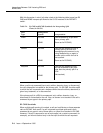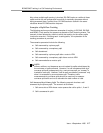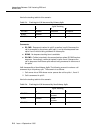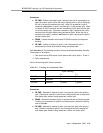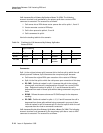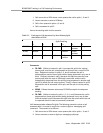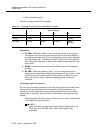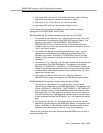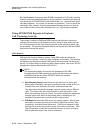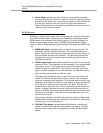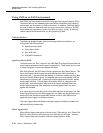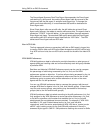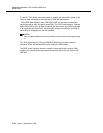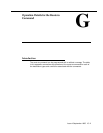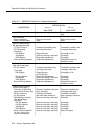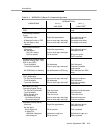
Interactions Between Call Vectoring/EAS and
BCMS/CMS
F-14 Issue 4 September 1995
R2 CMS Standard. Customers using R2 CMS connected to G1/G3 with vectoring
enabled cannot
necessarily
answer any of the questions. If multiple-split queuing
is involved, the OUTFLOWCALLS track contains both ‘‘my’’ calls and other splits’
calls that outflowed. As a result, the answers to questions 1, 3 and 4 cannot be
calculated. Also, question 2 cannot be answered because there is no track for
the number of calls coming from elsewhere that ‘‘my’’ split actually answered.
Using BCMS/CMS Reports to Evaluate
Call Vectoring Activity
There exists a number of CMS and BCMS reports that allow the customer to
evaluate various facets of Call Vectoring activity. Some of these facets include
the call flows present within Call Vectoring as well as the speeds at which calls
are answered. The sections that follow identify and discuss the CMS and BCMS
reports that indicate this activity.
CMS Reports
CMS has real-time and historical reports. Most CMS historical reports are
available in four versions: intra-hour, daily, weekday, and monthly. The following
list identifies and describes several CMS reports that summarize Call Vectoring
activity. For further details on these and other related reports, refer to the
3B Call
Management System Administration
585-215-511.
NOTE:
The reports described in this section are generated in R3 CMS.
Corresponding R2 CMS reports may not provide information that reflects
capabilities that are new to the DEFINITY Switch (for example,
internal/external call tracking).
■ Split Summary Report summarizes the call activity for an entire split.
Among other information, the report provides the total number of flow ins
(inflows), flow outs (outflows), dequeues, and abandoned calls.
The report also indicates the
average speed of answer
(interval ASA) for
calls. This refers to the sum of the queue time and ring time for a call
within the answering split
only
. Finally, the report indicates the
dequeued
average queue time
, which is the average time a call waits until it is
answered by another split to which the call is also queued.
■ VDN Report summarizes VDN activity for specific vectors. Among other
information, the report provides the number of VDN Flow Ins/Outs, calls
forced busy, and calls forced disconnect.
VDN Flow In
pertains to calls
that flow into a vector from another vector via a
route to
command.
VDN
Flow Out
pertains to calls that successfully flow out of vector to another
VDN or external location via a
route to
command.



